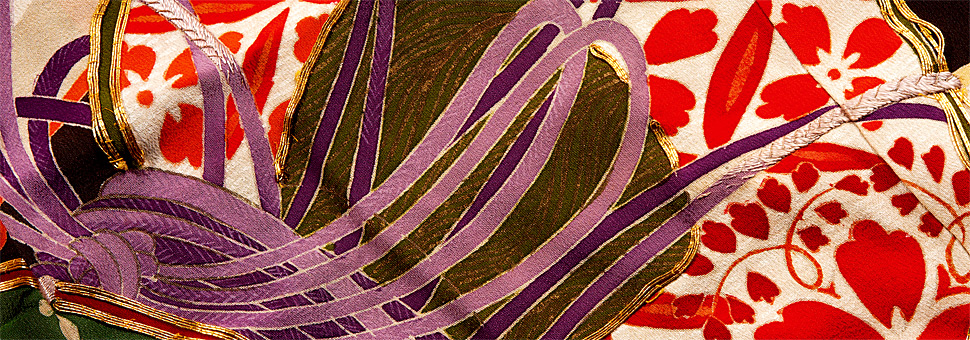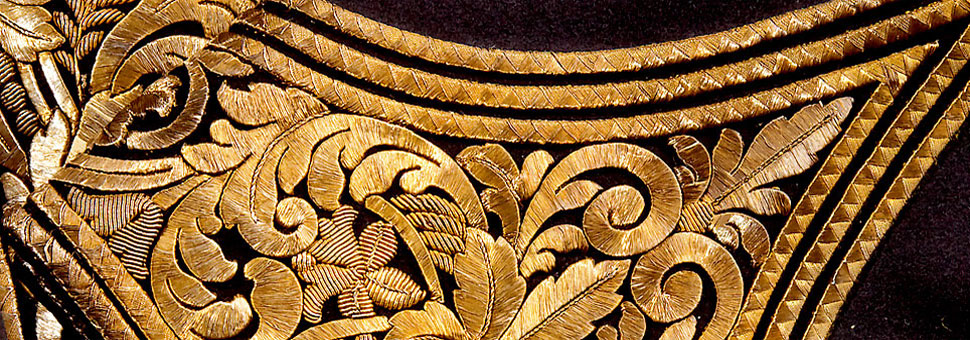From Monday, 2 October, the TRC presents a new exhibition that focuses on what people were wearing in the 1920s at various times of the day and on different occasions. We will show Western fashion from the 1920s, mostly for women, for daily, afternoon and evening wear, but there will also be underwear and pyjamas, sports wear, and a ceremonial outfit for a parliamentarian.
 TRC exhibition "The 1920s from head to toe: Fashion from 100 years ago". From Monday 2 October 2023. Photograph by author.
TRC exhibition "The 1920s from head to toe: Fashion from 100 years ago". From Monday 2 October 2023. Photograph by author.
After World War One, a feeling of freedom, wealth and liberation changed how women dressed themselves. Women were becoming an increasingly larger segment of the workforce in the Western world and their clothing reflected the need for practicality and use, but also a desire to be fashionable and have fun.
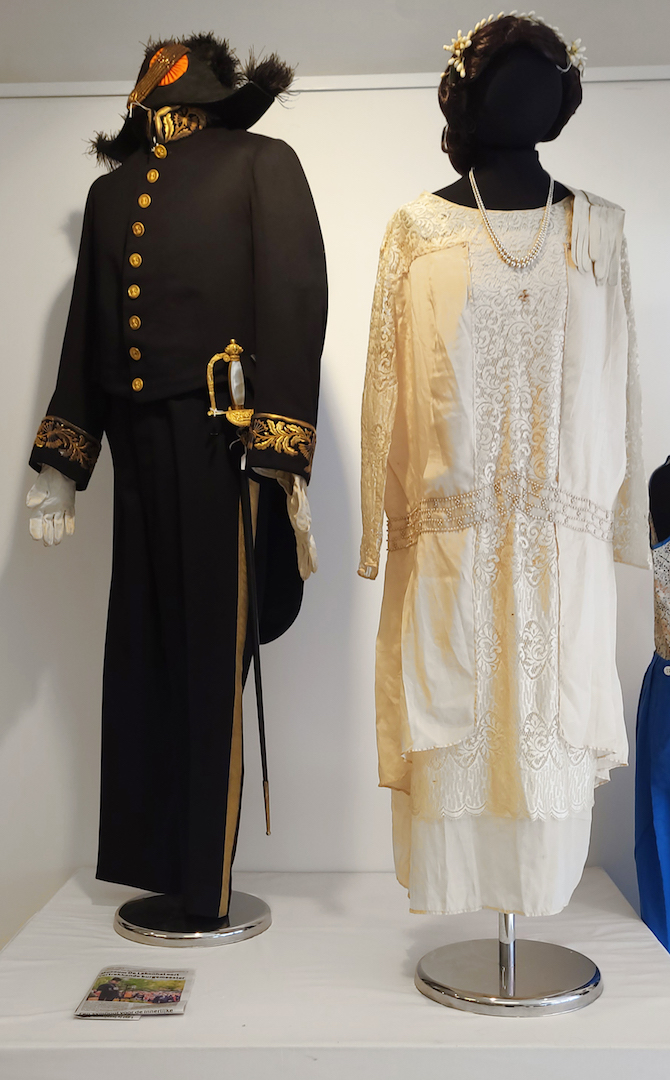 TRC exhibition "1920s from head to toe: Fashion from 100 years ago". From Monday 2 October 2023. Photograph by author.Affordable, ready-to-wear fashion sold in department stores democratised fashion among a wider range of people and those with a lower income could afford to participate in new fashionable clothing trends. It was the beginning of commercial fashion.
TRC exhibition "1920s from head to toe: Fashion from 100 years ago". From Monday 2 October 2023. Photograph by author.Affordable, ready-to-wear fashion sold in department stores democratised fashion among a wider range of people and those with a lower income could afford to participate in new fashionable clothing trends. It was the beginning of commercial fashion.
An interest in more active lifestyles and sports, film stars (silent movies), Art Deco and exotic cultures in the Middle East (Tutankhamun’s tomb was opened in 1922) and Asia all provided inspiration for the clothing of the time.
The ideal of beauty and fashion changed enormously from the preceding decades. Women cut their hair short and wore looser, comfortable, less complicated clothing. The ideal body shape was “boyish” with no hips or breasts, but a long and thin silhouette.
Before that, clothing for women included waist corsets, petticoats, and many other layers that emphasised a tiny waist and voluptuous arms, hips and shoulders.
The 1920s were an important period in dress history for women, when they became more liberated in how they dressed. Designers like Coco Channel made their debut during this time and became popular fashion icons. Beauty ideals changed and femininity expressed itself differently: you had to look modern and boyish, practise sports, emulate film stars and look very fancy at evening parties with elaborate dresses and headwear that catched the eye and light.
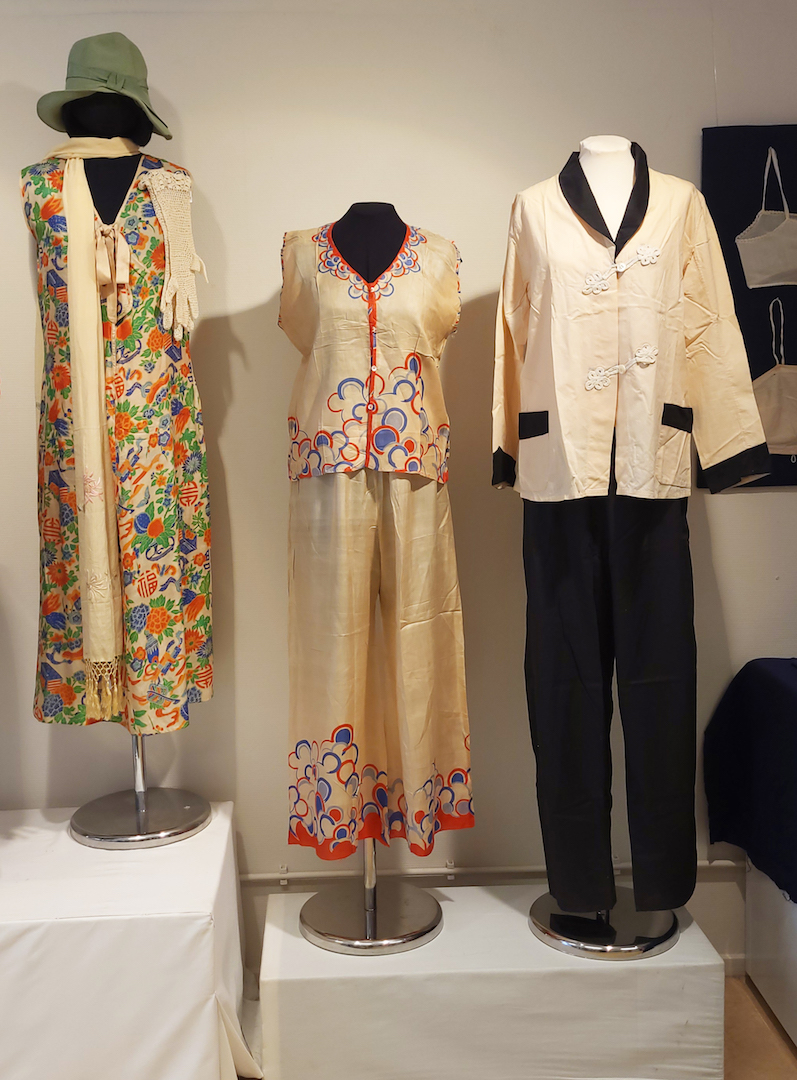 TRC exhibition "1920s from head to toe: Fashion from 100 years ago". From Monday 2 October 2023. Photograph by author.Rather than a low neckline, women showed their femininity with a shorter hemline, a slightly transparent fabric and open backs. Accessories such as hats, bags, shoes, jewellery and hair decoration became essential.
TRC exhibition "1920s from head to toe: Fashion from 100 years ago". From Monday 2 October 2023. Photograph by author.Rather than a low neckline, women showed their femininity with a shorter hemline, a slightly transparent fabric and open backs. Accessories such as hats, bags, shoes, jewellery and hair decoration became essential.
Re-imagining the 1920s
The modern image we have of the 1920s is usually the famous “flapper” evening dress and long cigarette holders. We imagine the dresses as very short with a lots of beaded fringes while women dance at luxurious parties. Actually, this is a re-imagining of the 1920s as conjured up by 1950s Hollywood films such as 'Singing In The Rain'. The 1950s and 1960s have shaped the way we imagine the 1920s.
In fact, there is much more to the decade than the bright young things in short dresses; dresses were shorter than before but never went above the knees, even for evening wear. It would not have been proper. Fringes were very expensive and time consuming to apply on dresses, so in fact there was much less of it on dresses than we imagine. The dresses we show for evening wear in the exhibition feature eye-catching materials such as velvets, transparent gauze and silks and are decorated with shiny beads and sequins rather than fringes.
The Ottow family connection
The dresses on show belong to Dutch families, some of them associated with Leiden itself. The Ottow family (Pof. Annetje Ottow is Chair of the Leiden University Board) has three dresses on show (two afternoon dresses and one daily). These items originate from connections in the former Dutch East Indies (for a separate blog on the Ottow donation, click here).
 TRC exhibition "1920s from head to toe: Fashion from 100 years ago". From Monday 2 October 2023. Photograph by author.
TRC exhibition "1920s from head to toe: Fashion from 100 years ago". From Monday 2 October 2023. Photograph by author.
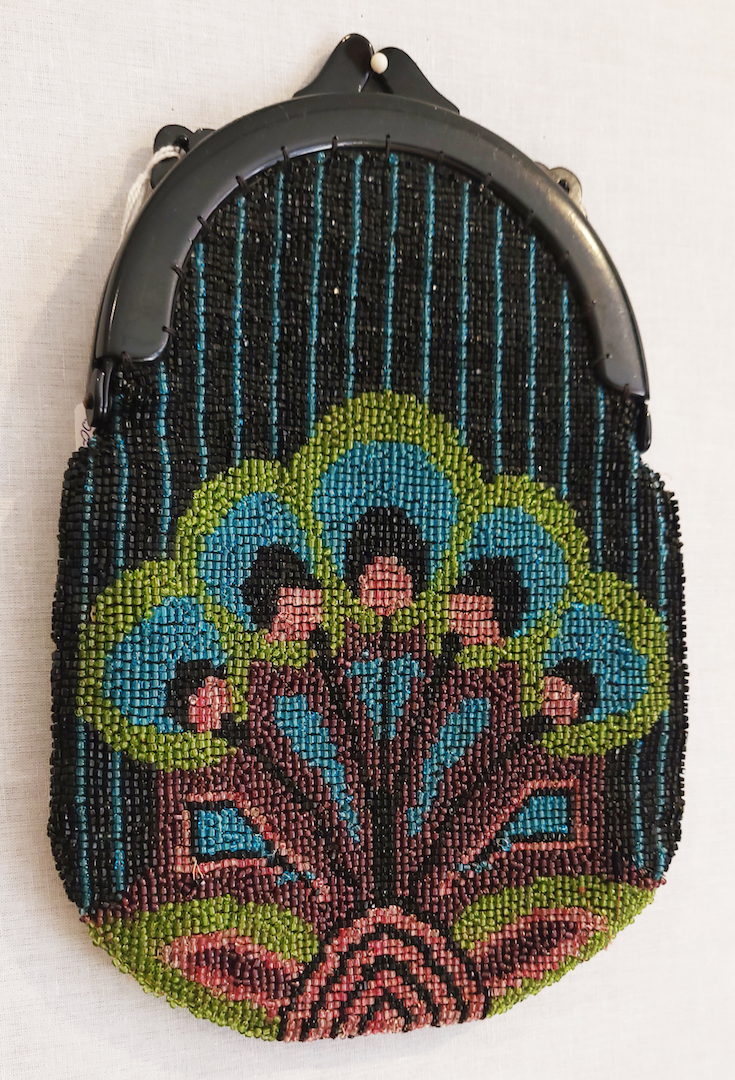 Small beaded bag with Art Deco decoration, 1920s (TRC 2021.2369).Swimwear from the Rapenburg, and a sewing machine with a long Leiden history
Small beaded bag with Art Deco decoration, 1920s (TRC 2021.2369).Swimwear from the Rapenburg, and a sewing machine with a long Leiden history
The Van Enter-Westerman Holstijn family provided many of the daily dresses and swimwear. They lived on the Rapenburg. Finally, the Bonte family, with a long history in Leiden, has kindly donated and loaned part of the skiing outfit, jewellery and even a family sewing machine from the time period. One could have seen these outfits being worn in the streets of Leiden or on holiday destinations a hundred years ago by these Leiden people!
We would like to kindly thank the members of these families for their donations.
The official opening of the exhibition, by Yvonne van Delft, wethouder of the Leiden municipality, is on 28 September, from 17.15, at the TRC, Hogewoerd 64, Leiden.
Augusta de Gunzbourg, curator TRC, 19 September 2023



